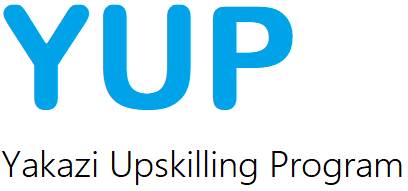Building a Career Path Framework: How to Retain Top Talent

Retaining top talent is one of the most important challenges for businesses in today’s competitive landscape. While attracting skilled professionals is a priority, ensuring they stay and thrive within the organization is what ultimately drives long-term success. A key strategy to achieve this is by building a career path framework, a clear roadmap for employees’ growth and development within the company. A well-designed framework not only helps retain top talent but also fosters loyalty, engagement, and overall satisfaction.
1. Understand Employee Goals and Aspirations
To build an effective career path framework, it’s important to understand what employees value in their careers. Regular one-on-one meetings between managers and employees can provide valuable insights into their professional goals and aspirations. By tailoring career paths to individual ambitions, companies can keep employees motivated and aligned with the organization’s broader objectives.
2. Create Clear and Defined Career Paths
A major reason employees leave companies is the lack of clarity around advancement opportunities. A career path framework should provide clear, structured pathways for employees to follow. This includes outlining the skills, experiences, and milestones required to reach the next level. For example, if an employee aspires to a managerial role, they should know exactly what competencies are needed to move up the ladder. When employees see a clear path forward, they are more likely to stay and invest in the company’s success.
3. Offer Continuous Learning and Development
Top talent seeks opportunities for skill development and personal growth. A career path framework should include resources for learning and upskilling. Providing access to training programs, certifications, mentorship, and cross-functional experiences not only helps employees grow but also keeps them engaged and fulfilled in their roles. When employees feel they are growing, they are more likely to stay with the organization.
4. Provide Regular Feedback and Recognition
Top performers thrive on feedback and recognition. Employees want to know how they are progressing and how their contributions impact the organization. A successful career path framework includes regular performance reviews, feedback sessions, and recognition of milestones. This helps employees understand where they stand and how they can continue to grow, reinforcing their sense of value within the company.
5. Promote Internal Mobility
One effective way to retain top talent is by promoting internal mobility. When employees are given opportunities to explore different roles or departments, it prevents stagnation and fosters a culture of growth. Internal mobility helps employees gain new skills, experience fresh challenges, and stay engaged without leaving the organization. By supporting this, companies can nurture well-rounded professionals who contribute more broadly to the business.
6. Ensure Competitive Compensation and Benefits
While career growth is important, compensation and benefits remain a significant factor in retention. A career path framework should include competitive salaries, performance-based bonuses, and benefits that align with employees’ needs. Offering benefits such as flexible working hours or wellness programs also plays a key role in improving retention by supporting employees’ well-being.
7. Leverage External Support for Career Development
To further enhance the career path framework, companies can collaborate with external services like Yakazi to provide career coaching, CV revamping, or interview preparation for employees. This partnership can help employees refine their skills, prepare for career transitions, and gain valuable guidance in achieving their professional goals. Offering access to external career development resources not only helps employees advance but also signals that the company is invested in their long-term success.
Conclusion
Building a career path framework is a powerful tool for retaining top talent. By providing clear career trajectories, offering continuous development opportunities, promoting internal mobility, and recognizing employees’ contributions, companies can create an environment where top performers want to stay and grow. Ultimately, investing in employees’ careers helps foster a culture of loyalty, engagement, and success, ensuring the long-term prosperity of both individuals and the organization as a whole.

